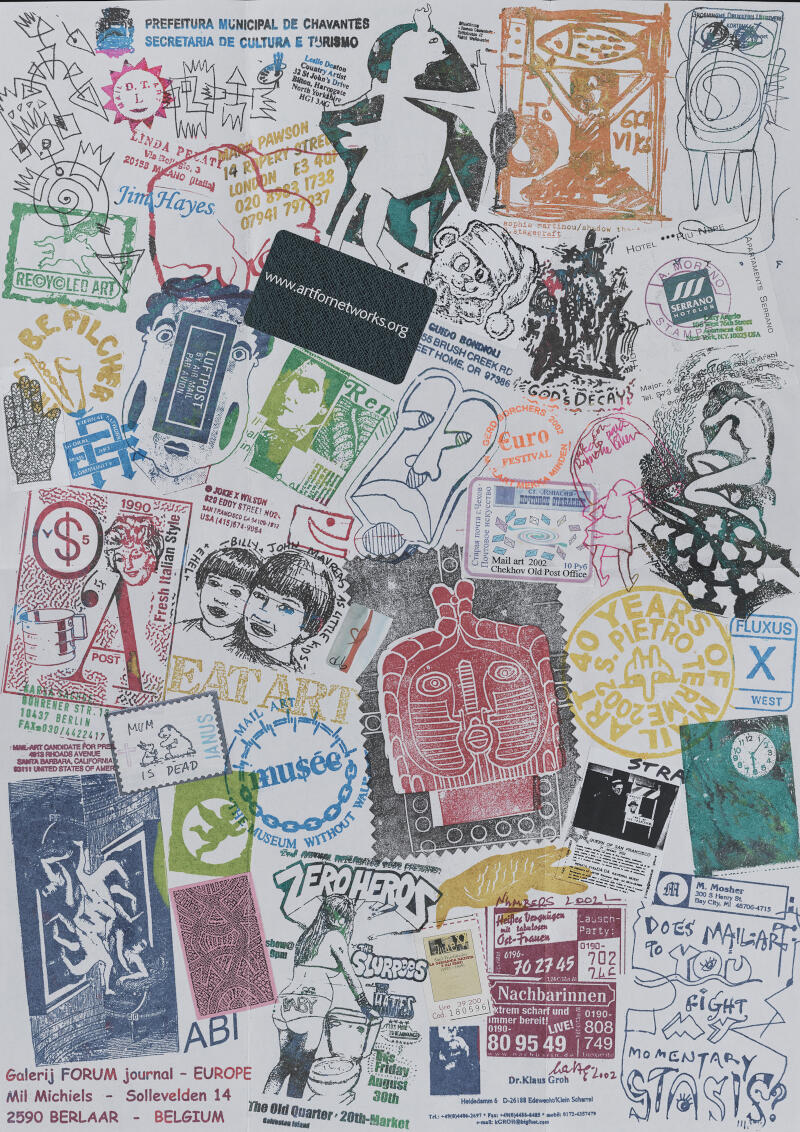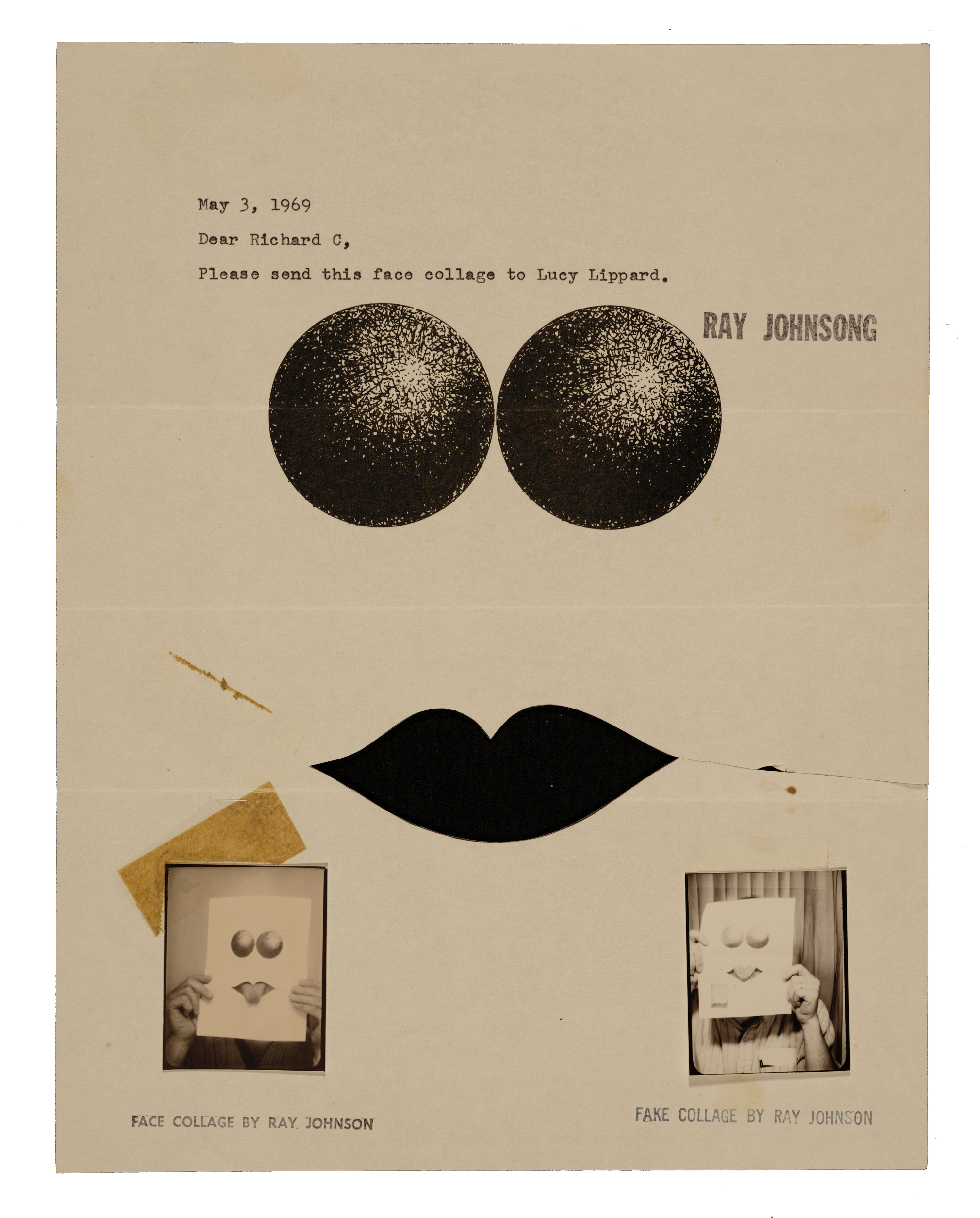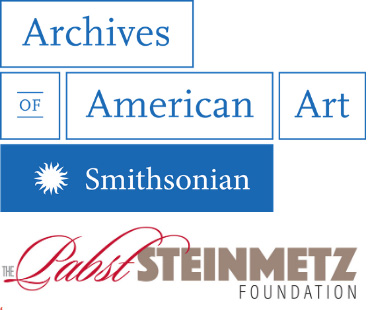Pushing the Envelope
Mail Art from the Archives of American Art
Artistic creation in the 20th century is characterized by the exploration of non-traditional media and the questioning of institutional modes of display and dissemination. The Cornell Fine Arts Museum is pleased to present Pushing the Envelope: Mail Art from the Archives of American Art, an exhibition that features archival material that is rarely on view.
Beginning in the 1960s, artists from around the world looked to the postal system as an alternative means of producing, distributing, and receiving art. Mail art (alternatively called “correspondence art” or “postal art”) emerged as a form of artistic practice in which an international network of participants use the mail to make art and share it with others. With letters, postcards, and packages—as well as material that tested the limits of what could be posted—mail artists circumvent traditional elite modes of display and distribution (such as museums and commercial galleries) in favor of the more accessible space of the modern post. Utilizing the commonness and interconnectedness of postal networks, they interrogated the inequities of the global art market and national regulations regarding culture and communications, creatively sidestepping the art market and, in many instances, eluding government censors. Examining how mail art has worked across divergent cultural circumstances—from McCarthy-era America, to Soviet Poland, to Chile under the dictatorship of Augusto Pinochet—this exhibition engages issues of circulation, collaboration, and community in and among specific national contexts during the second half of the twentieth century.
Pushing the Envelope features mail art selected from the collections of the Smithsonian’s Archives of American Art. It was guest curated by Dr. Miriam Kienle, Assistant Professor at the University of Kentucky, in conjunction with the University of Kentucky students in her special topics seminar on the international mail art movement. The exhibition features the work of Richard Tuttle, Ray Johnson, and Ry Nikonova, among others.
The exhibition was made possible, in part, through the Pabst Steinmetz Foundation.


